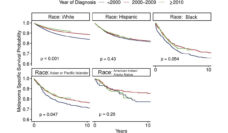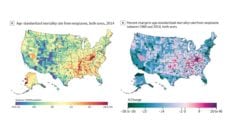As the fourth most common type of cancer, colorectal cancer has a survival rate of 90%. But only if it’s caught early. For this reason, the CDC recommends that once adults turn 45, they get routine screening for colorectal cancer every five to 10 years. However, your likelihood of getting screened, and consequently your likelihood of getting diagnosed and treated, largely depends on where you live.
Colon cancer mortality is more common in neighborhoods of low socioeconomic status. And, the chances of getting screened for colon cancer are lower there too. This association between higher mortality and lower screening rates in low-income neighborhoods occurs regardless of personal socioeconomic status, and health care access and beliefs.
Kiara Mayhand and her team studied the association between neighborhood and individual factors that influenced cancer screening among 526 participants, aged 50 to 85, from diverse, socio-economically disadvantaged, and underserved communities in the Philadelphia area. Researchers surveyed participants socioeconomic and health care access and combined this information with U.S. census neighborhood statistics.
Twenty-nine percent of people in the study did not adhere to screening guidelines. Nationally, the rate is 21.9%. Consistent with previous research, Mayhand and colleagues found that persons who did not adhere to screening guidelines were more likely to live in neighborhoods of lowest socioeconomic status. They also found that the likelihood of getting screened for colorectal cancer increased with age and differed by ethnicity. Black participants were more likely to undergo screening compared to Hispanic and White participants. Lack of colorectal cancer screening was also common among people who could not afford doctor visits.
Participants who owned a home, as opposed to renting one, were more likely to get screened. The investigators suggest that renting a home is a possible indicator of housing instability and food insecurity.
Perceiving discrimination from healthcare providers was associated with low screening rates. The researchers explain that this association had been established previously for colon and breast cancer screening. Recent studies have also shown that experiencing racial discrimination is associated with refusing and underutilizing care.
Colonoscopies are one of the most common methods to screen for colorectal cancer. They can reduce your risk of getting the disease by 62% and your risk of dying of colorectal cancer by 52%. Other screening methods, such as testing for blood in feces are also highly effective at reducing mortality.
To increase colorectal cancer screening rates in low-income communities, residents must feel comfortable seeking care, regardless of their race. These findings highlight the need for targeted interventions in neighborhoods of lower socioeconomic status. For example, the researchers plan to use these findings to develop outreach programs to increase screening rates among renters and persons without health insurance.
Photo via Getty Images














